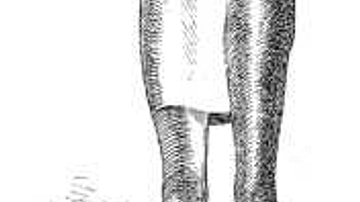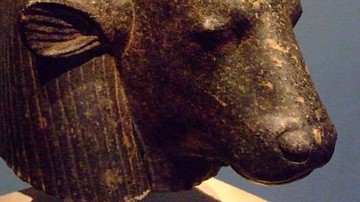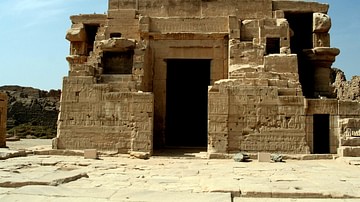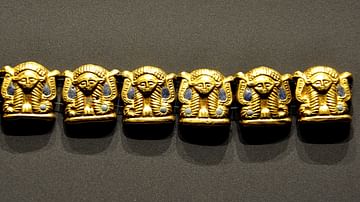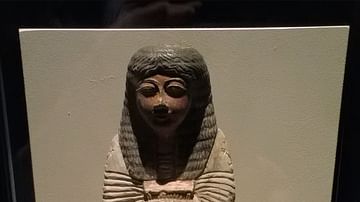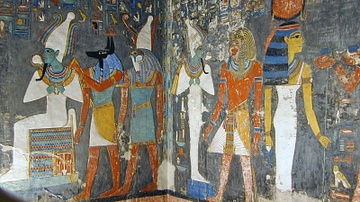Illustration
Priests used bowls like this in temples for liquid offerings to the gods. Two faces of the goddess Hathor adorn the rim. Flat depictions of persons were usually in profile, but Hathor's face was widely displayed in frontal view. In such images she has cow's ears, but she could also represented with horns or as a cow. Hathor was Egypt's most universal goddess, and the bowl probably stood in a temple of a different deity. However, it bears no inscription to reveal where this was. 22nd Dynasty, circa 945-715 BCE. Perhaps from Karnak, Egypt. (The British Museum, London).
Cite This Work
APA Style
Amin, O. S. M. (2016, July 18). Egyptian Libation Bowl. World History Encyclopedia. Retrieved from https://www.worldhistory.org/image/5339/egyptian-libation-bowl/
Chicago Style
Amin, Osama Shukir Muhammed. "Egyptian Libation Bowl." World History Encyclopedia. Last modified July 18, 2016. https://www.worldhistory.org/image/5339/egyptian-libation-bowl/.
MLA Style
Amin, Osama Shukir Muhammed. "Egyptian Libation Bowl." World History Encyclopedia. World History Encyclopedia, 18 Jul 2016. Web. 24 Apr 2024.


